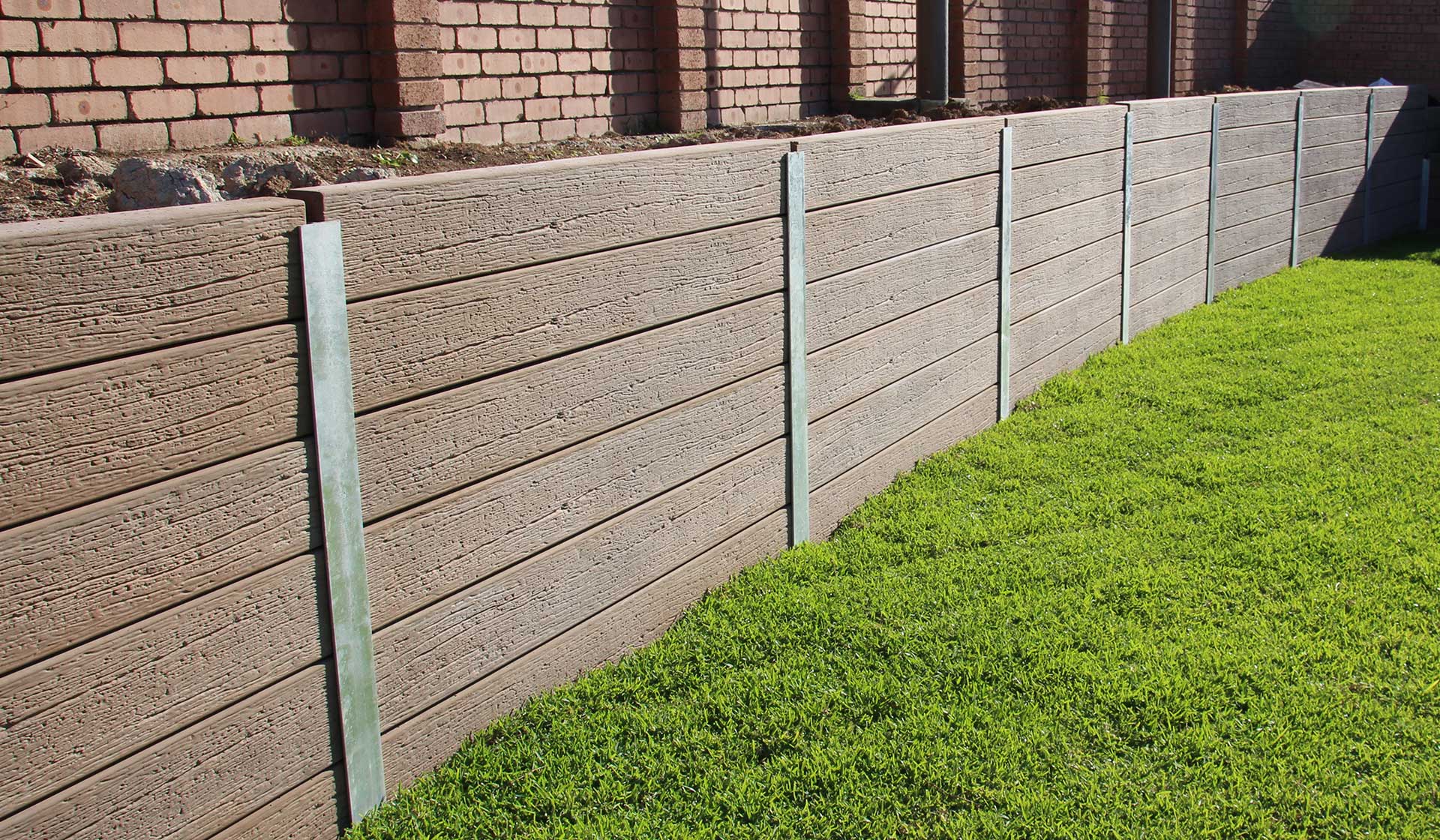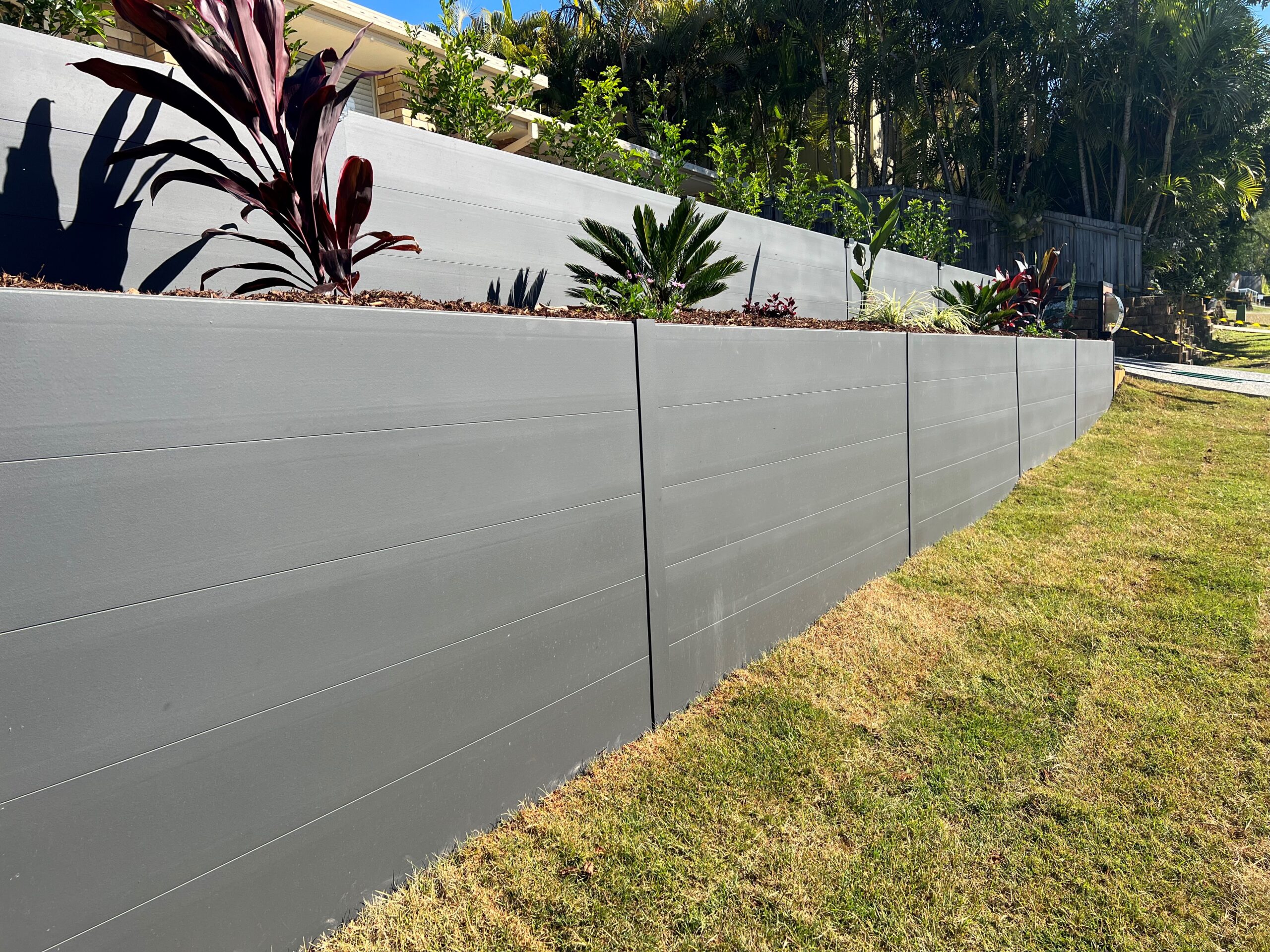Leading Advantages of Specialist Retaining Walls Sunshine Coast for Your Home
Making Certain Architectural Stability: The Value of Effectively Constructed Maintaining Walls in Stopping Incline Failing
In the world of civil engineering and construction, the value of properly created maintaining walls in avoiding incline failure can not be downplayed. By checking out the intricate interaction between these aspects, a deeper understanding of the critical role that retaining wall surfaces play in protecting architectural stability and avoiding slope failure arises.
Function of Retaining Walls in Stability
The indispensability of keeping wall surfaces in making sure slope security is critical in civil design practices. Maintaining walls serve an essential duty in preventing soil disintegration, managing water overflow, and maintaining the structural honesty of slopes. By supporting upright or near-vertical grade modifications, retaining walls assist to redistribute lateral stress put in by the dirt, thereby decreasing the threat of incline failure.
One trick feature of retaining walls is to combat the pressure of gravity acting upon the soil mass behind them. This is accomplished with appropriate layout and construction, which thinks about factors such as soil type, wall height, drain arrangements, and prospective additional charge loads. By effectively keeping soil within specified limits, these frameworks assist to support inclines and stop landslides.
In addition, preserving walls contribute to the aesthetics of landscapes while offering useful advantages. They can produce terraced degrees for landscaping, support roads or structures on hills, and improve the overall functionality of sloped terrain. Basically, preserving walls play an important function in preserving slope security and making certain the security and longevity of civil design tasks.
Aspects Influencing Wall Effectiveness
Elements that influence the performance of maintaining walls include soil properties, wall surface style, and outside tons. Dirt residential properties play an essential function in identifying the stability and efficiency of a retaining wall. Variables such as soil kind, communication, internal rubbing angle, and groundwater problems can affect how well a wall surface keeps the dirt behind it. The style of the keeping wall is an additional vital variable that affects its performance. Correct wall layout thinks about factors like wall surface elevation, wall kind (e.g., gravity walls, cantilever walls), support materials, water drainage systems, and building strategies to make certain the wall can endure the side pressure applied by the preserved dirt. Furthermore, exterior loads, such as additional charge lots from surrounding structures or website traffic, seismic forces, and water stress, need to be carefully evaluated throughout the design and building phases to make sure the wall surface can appropriately resist these outside pressures. By taking into consideration these aspects adequately, designers can construct keeping wall surfaces that properly avoid incline failure and guarantee long-lasting architectural integrity.
Design Factors To Consider for Preserving Wall Surfaces
Integrating the essential facets of dirt homes and external lots right into the structural design procedure is crucial for establishing efficient keeping walls that ensure incline security. When developing maintaining wall surfaces, designers have to carefully evaluate the features of the surrounding official source dirt, including its type, compaction, and water drainage residential properties. Comprehending these soil residential properties is important for determining the ideal wall surface height, density, and support required to endure the side stress put in by the dirt mass.
Furthermore, exterior loads such as additional charge lots from neighboring frameworks or web traffic, along with seismic forces, have to be taken into account throughout the design phase. These tons can substantially impact the security and efficiency of a keeping wall surface, necessitating making use of correct design methods and products to mitigate prospective failing threats.
In addition, the selection of appropriate products, such as concrete, rock, or hardwood, should align with the aesthetic demands and site-specific problems. Variable of safety considerations, drain stipulations, and building techniques are also important aspects that affect the total layout and performance of preserving wall surfaces in preventing incline failing. By thoroughly thinking about these style factors to consider, designers can make certain the architectural honesty and lasting security of preserving wall surfaces.

Construction Best Practices for Sturdiness
When building maintaining wall surfaces for optimum longevity and long life, adherence to industry-standard strategies and thorough focus to information are extremely important. To make certain the toughness of a preserving wall surface, appropriate website preparation is important. This includes ample compaction of the dirt, appropriate drainage systems, and making sure the wall's foundation is audio. Utilizing premium materials, such as cinder blocks or all-natural stone, is crucial for the durability of the framework. In addition, utilizing experienced professionals with experience in creating preserving walls can considerably influence the longevity of the final product.
Incorporating support techniques, such as geogrids or steel bars, can enhance the structural integrity of the retaining wall and prevent potential failures. By complying with these building best practices, retaining walls can withstand the test of time and efficiently avoid slope failing.
Relevance of Correct Maintenance
Regular maintenance is important for maintaining the structural integrity and performance of retaining wall surfaces over time. To ensure that maintaining walls continue to perform their desired function successfully, regular assessments should be performed to determine any type of signs of wear and tear.

Conclusion
Finally, keeping walls play a vital role in making sure structural honesty and protecting against incline failing. By taking into consideration variables influencing wall effectiveness, adhering to design considerations, following construction finest methods, and carrying out appropriate maintenance, the toughness of maintaining walls can be made the most of. Retaining Walls Sunshine Coast. It is necessary to acknowledge the value of correctly built keeping walls in keeping security and protecting against possible dangers connected with incline failing
Elements that influence the performance of preserving wall surfaces include soil residential or commercial properties, wall layout, and exterior tons. Proper wall surface style considers variables like wall surface height, wall surface type (e.g., gravity walls, cantilever wall surfaces), reinforcement products, drainage systems, and building and construction methods to make sure the wall can hold up against the side pressure applied by the kept dirt. By thinking about these factors comprehensively, designers can create maintaining wall surfaces that effectively protect against slope failure and make sure lasting structural honesty.
Upkeep jobs may consist of getting rid of drain systems to stop water buildup behind the wall surface, fixing any noticeable splits or damage, and making certain that the wall is free from plants that can exert stress on the framework. By thinking about variables affecting wall surface effectiveness, adhering to make considerations, adhering blog here to building ideal techniques, and executing correct upkeep, the sturdiness of retaining walls can be taken full advantage of.